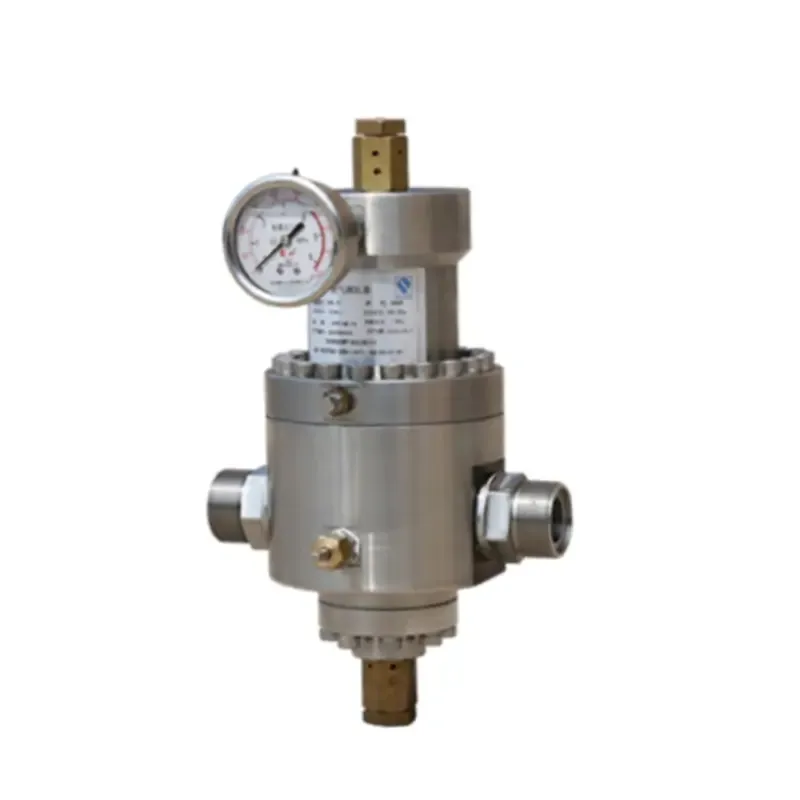
Dec . 04, 2024 09:26
Back to list
صمام تنفيس أمان الغاز
The Importance of Safety Relief Valves in Gas Systems
In modern industrial applications, safety is paramount, particularly when dealing with potentially hazardous materials like gas. One critical component that plays a significant role in ensuring safety in gas systems is the safety relief valve. These valves are essential for preventing overpressure scenarios, which can lead to catastrophic failures, accidents, and even loss of life.
A safety relief valve, commonly referred to as a pressure relief valve, is designed to automatically release gas or liquid from a system when the pressure exceeds a predetermined limit. This automatic response protects equipment, personnel, and the environment. It serves as a fail-safe mechanism, thereby ensuring that pressure levels remain within safe operating limits.
How Safety Relief Valves Work
The mechanism of a safety relief valve involves the use of a spring-loaded or pilot-operated design. When the pressure in a gas system rises above the preset level, the valve opens, allowing the excess gas to escape. This release of gas reduces the pressure in the system, thereby preventing potential explosions or ruptures. When the pressure falls back to a safe level, the valve reseals, stopping the gas flow.
.
Applications in Various Industries
صمام تنفيس أمان الغاز

Safety relief valves are crucial in various industries, including oil and gas, chemical manufacturing, and energy production. In the oil and gas sector, these valves prevent blowouts and leaks during drilling operations. In chemical plants, they protect reactors and storage vessels from overpressure due to exothermic reactions or equipment failures.
Moreover, safety relief valves are also utilized in residential gas systems, such as natural gas pipelines. The importance of these valves in home safety cannot be overstated. They ensure that households remain safe from gas leaks and explosions, contributing to overall public safety.
Regulatory Standards and Compliance
To ensure the effectiveness of safety relief valves, various regulatory standards govern their design, installation, and maintenance. Organizations such as the American Society of Mechanical Engineers (ASME) and the American National Standards Institute (ANSI) provide guidelines that manufacturers and operators must adhere to. Compliance with these regulations not only ensures safety but also protects operators from legal liabilities and financial losses resulting from accidents.
Regular inspection and maintenance of safety relief valves are also critical. Over time, these valves can wear out or become clogged, which can impair their functionality. Routine testing and servicing ensure that safety relief valves operate effectively when needed.
Conclusion
In conclusion, safety relief valves are an indispensable component of gas systems, providing a critical line of defense against overpressure scenarios. By automatically releasing excess pressure, they safeguard equipment, personnel, and the environment from potentially disastrous outcomes. As industries continue to evolve and safety standards become more stringent, the role of these valves will only become more significant. Investing in high-quality safety relief valves and adhering to regulatory standards will ensure that gas systems operate safely and efficiently, ultimately protecting lives and property from the dangers of overpressure incidents.
Next:
Latest news
-
Safety Valve Spring-Loaded Design Overpressure ProtectionNewsJul.25,2025
-
Precision Voltage Regulator AC5 Accuracy Grade PerformanceNewsJul.25,2025
-
Natural Gas Pressure Regulating Skid Industrial Pipeline ApplicationsNewsJul.25,2025
-
Natural Gas Filter Stainless Steel Mesh Element DesignNewsJul.25,2025
-
Gas Pressure Regulator Valve Direct-Acting Spring-Loaded DesignNewsJul.25,2025
-
Decompression Equipment Multi-Stage Heat Exchange System DesignNewsJul.25,2025

